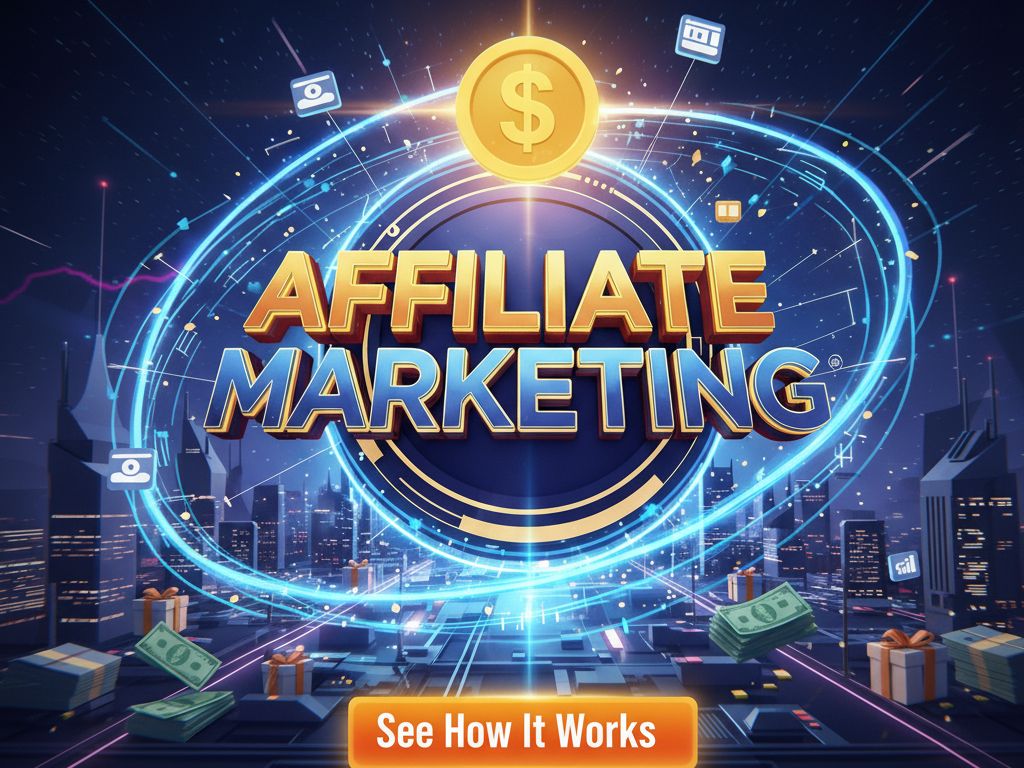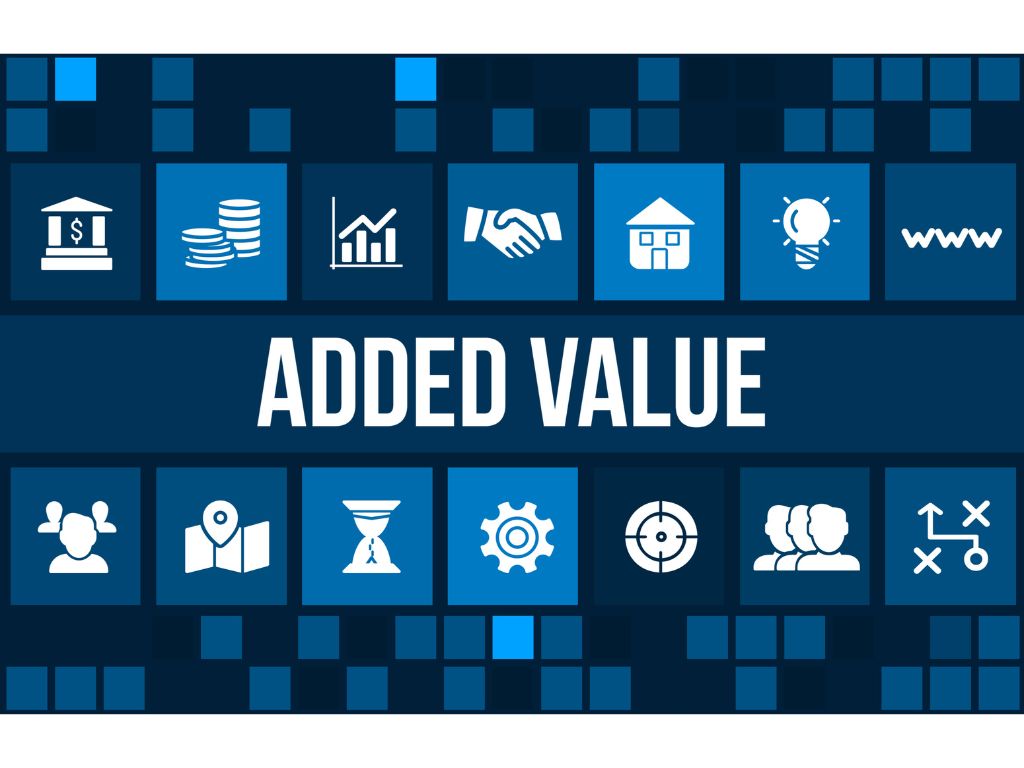Introduction
Lead magnets are the silent engine behind every thriving affiliate marketing business. They capture attention before you ever ask for a click, a purchase, or even a second glance. In a world where most affiliate links blur into the background, a strong lead magnet pulls potential customers closer not through hype, but through value.
Affiliate marketers who understand this shift stop chasing quick clicks and start building loyal audiences. Because the truth is simple: people don’t buy from links, they buy from trust.
By the end of this guide, you’ll know exactly which lead magnets attract the right audience, how to create one that actually converts, and how to turn your traffic into a long-term source of recurring commissions.
Key Takeaways
What Makes a Lead Magnet Convert
- Lead magnets build trust before a sale ever happens.
- The best magnet fits your audience’s intent, not a trending format.
- Relevance and simplicity convert better than complexity or volume.
- Each lead magnet should guide the reader naturally toward your affiliate offer.
- Testing, tracking, and refining will always outperform guessing.
- A strong lead magnet turns cold traffic into long-term relationships.
Affiliate Disclosure: Some of the links on this site are affiliate links. That means if you click and make a purchase, I may earn a small commission at no extra cost to you. I only recommend tools and resources I genuinely believe in and that align with the content we share here.

Why lead magnets matter in affiliate marketing
Affiliate marketing lives and dies by trust. The audience doesn’t owe you their attention, and they certainly don’t owe you a click. That’s why the first transaction in affiliate marketing isn’t monetary, it’s psychological. A lead magnet earns that first “yes” by giving value before asking for anything in return.
When a visitor downloads your checklist, joins your free mini-course, or grabs a niche-specific guide, they’re not just opting into an email list. They’re signaling curiosity and openness. That moment is where the relationship begins. Once someone sees you as a helpful expert, the chances of them following your affiliate recommendations rise sharply.
Unlike paid ads or random social posts, lead magnets build owned audiences people you can reach again and again without spending more money. They help you shift from being another anonymous link sharer to becoming a trusted guide who offers clarity in a noisy space.
According to HubSpot (2024), marketers who use targeted lead magnets see up to four times higher conversion rates compared to generic sign-up forms. The reason is simple: when the offer feels relevant and useful, it doesn’t feel like marketing at all.

Types of lead magnets that actually convert
Lead magnets only work when they deliver quick, specific value. The best ones remove a small barrier your audience faces before they’re ready to buy. In affiliate marketing, that means giving something that moves the reader one step closer to trusting your recommendations, not just downloading another PDF.
Below are the formats that consistently drive opt-ins and conversions across affiliate niches, along with real examples of how to use each effectively.
1. eBooks and Guides
An eBook or guide works best when your audience is research-minded people who want to learn before they spend. It positions you as a teacher, not just a promoter.
For example:
- If you promote SEO tools, create a “Beginner’s Guide to Ranking Affiliate Blogs in 2025.” Inside, walk readers through the fundamentals using screenshots or case snippets from your recommended tool (without direct pitching).
- If you’re in the fitness niche, try “The 7-Day Reset Guide for Sustainable Weight Loss.” You can then introduce your affiliate products like supplements or workout plans as part of the “helpful resources” section.
Keep it short, visually clean, and tightly focused on one promise. The goal is for your reader to finish it in one sitting and feel a small win immediately.
According to Demand Metric, guides under 10 pages have 35% higher completion rates than longer PDFs.
2. Checklists
Checklists are the fastest way to turn casual readers into subscribers. They promise clarity and simplicity a mental relief for people overwhelmed by too much information.
For example:
- A “Pre-Publish SEO Checklist” can tie to an affiliate SEO plugin or keyword tool.
- A “Daily Social Media Posting Checklist” could link naturally to scheduling tools or analytics platforms you promote.
- A “Starter Kit Checklist for Beginner Bloggers” can point to hosting, domain, and design tools (each with affiliate links later in your email sequence).
Checklists convert well because they offer immediate usability, something your reader can print or use within minutes. No reading, no setup, just action.
3. Templates and Swipe Files
Templates are perfect when your audience wants results fast but doesn’t know where to start. They remove friction and offer a “done-for-you” feeling.
Examples include:
- Email Swipe Files: “5 Plug-and-Play Affiliate Emails to Promote Digital Products.” Each template shows structure and copy logic, subtly introducing your affiliate tools for writing or automation.
- Content Templates: “30-Day Blog Content Calendar for Affiliate Marketers.” You can mention your affiliate keyword tools, content management systems, or SEO platforms in context.
- Ad Templates: “High-Conversion Facebook Ad Copy Templates for Beginners.” Useful if you promote ad tools or training programs.
Templates make the reader feel prepared which psychologically primes them to take the next step you recommend.
4. Quizzes and Calculators
These interactive magnets personalize the experience. They work because they make the reader feel seen.
For example:
- “Find Your Ideal Affiliate Niche” Quiz: Helps beginners pick a profitable niche. You can then recommend affiliate research tools or training programs based on their result.
- “Affiliate Commission Calculator” for financial or SaaS affiliates. After users input their traffic or conversion data, the results page can feature affiliate tracking tools or optimization platforms.
- “What’s Your Marketing Personality?” quiz for creators and influencers ending with personalized recommendations for tools that fit their style.
Quizzes and calculators also generate powerful behavioral data. You learn what your audience struggles with and can segment your email list for smarter follow-ups.
5. Webinars or Mini-Courses
These are the most powerful magnets for building authority in high-trust niches like finance, software, or education. They work because they combine education with personal connection — people can see and hear your expertise.
Example formats:
- Live Workshop: “How to Build a $500/Month Affiliate Blog in 60 Minutes.” During the session, teach real steps while demonstrating tools you’re affiliated with (without overselling).
- Mini Email Course: A 3-day sequence like “Affiliate Marketing in 3 Steps: From Idea to Income.” Each email can cover one phase, leading naturally to your affiliate recommendations.
- Video Masterclass: “The Smart Creator’s Guide to Monetizing an Audience.” Works well when promoting premium tools like funnel builders or email automation software.
Webinars and mini-courses require more effort, but they create deep trust, the kind that drives recurring commissions.
GoToWebinar reports that educational webinars achieve 40–50% attendance rates when paired with exclusive follow-up resources, 2024.
Bottom Line: There’s no single “best” lead magnet format. The right one depends on your audience’s stage of awareness and what you’re promoting. If your readers are overwhelmed, start with a checklist. If they’re eager to learn, offer a guide. And if they need to see results firsthand, create something interactive or experiential.
The most powerful lead magnet isn’t the one that looks impressive, it’s the one that feels relevant.
Create High-Converting Lead Magnets in Minutes.
Feed in your video, post, or idea — get a complete download and opt-in page that starts building your list before the day ends.

How to create a high-converting lead magnet
Most affiliate marketers think the secret to a great lead magnet is creativity. It isn’t. The real secret is alignment matching what your audience wants right now with what your affiliate offer helps them achieve next. When those two align perfectly, conversion feels natural.
Here’s how to build a lead magnet that doesn’t just attract subscribers but moves them closer to buying without sounding like a sales pitch.
1. Start with your audience’s most urgent problem
Every high-performing lead magnet begins with empathy. Before you design anything, ask: “What’s stopping my audience from taking the next step?”
For example, if you promote SEO tools, their biggest barrier might be “not knowing which keywords to target.” That insight becomes your lead magnet idea, maybe a “Free Keyword Planning Template.”
Clarity always beats cleverness. Choose one problem, one promise, and one quick result.
2. Make it ridiculously easy to consume
Your reader shouldn’t need an instruction manual to benefit from your lead magnet. The faster they get the “aha!” moment, the higher your conversion and retention.
Keep it short, scannable, and results-driven:
- Checklists should fit on one page.
- eBooks should deliver value within 5–10 minutes.
- Quizzes should show instant results.
- Videos should stay under 10 minutes unless it’s a full workshop.
Remember: the goal is to build momentum, not to teach everything you know.
3. Offer one transformation, not ten tips
Too many affiliate lead magnets try to do too much “25 ways to grow traffic,” “100 SEO hacks,” “30 income streams.” That kind of overload kills clarity.
Instead, promise one transformation. For example:
- “From zero to your first 100 subscribers.”
- “From no niche to your first affiliate post idea.”
- “From messy links to a clean tracking system.”
When the reader experiences a small win, they trust you for the next step, the one that involves your affiliate product.
4. Design with clarity, not decoration
A professional look builds trust, but design should serve readability, not ego. Use clean fonts, generous white space, and consistent branding.
For example, a minimalist checklist with icons converts better than a cluttered eBook with heavy graphics. If you’re not a designer, use free tools like Canva or Notion templates but keep formatting consistent across all your content.
Visual simplicity makes your offer feel credible and “real,” even if it’s free.
5. Add a soft bridge to your affiliate offer
A high-converting lead magnet doesn’t hard-sell. It connects value to the next logical step.
At the end of your lead magnet, include a small note such as:
“If you’d like to automate this process, here’s the tool I use daily.”
Or:
“This checklist pairs perfectly with [Affiliate Tool Name], which helps you implement these steps faster.”
That bridge feels like guidance, not persuasion and it turns your content into a conversion path rather than a dead end.
6. Test, refine, repeat
No magnet is perfect on the first try. Track conversion rates, open rates, and click-throughs from your follow-up emails. If your opt-in rate is below 2%, test a new headline or switch to a simpler format.
Over time, you’ll learn exactly which promises, visuals, and delivery styles make your audience take action.
ConvertKit’s 2025 benchmark study found that small, incremental A/B tests on lead magnet headlines improved opt-in rates by an average of 18%.
Bottom Line: A high-converting lead magnet doesn’t chase trends or complexity. It’s the quiet piece of content that solves one pain, earns one trust point, and builds one step of momentum toward your affiliate offer.

How to promote your lead magnet
A powerful lead magnet is only valuable if people see it. Most affiliate marketers stop at creation; they design a beautiful checklist or guide, publish one post about it, and wonder why no one opts in.
The truth is, visibility is a strategy, not luck. You must deliberately place your lead magnet where your ideal readers already spend time and where intent is highest.
Here’s how to make your lead magnet impossible to ignore.
1. Embed it directly inside your blog content
Don’t bury your lead magnet in a sidebar or footer. Instead, integrate it naturally inside your articles where the reader is already engaged.
For example, if you write a post titled “How to Start Affiliate Marketing for Beginners,” insert your “Affiliate Starter Checklist” halfway through right after explaining the basic steps. That’s where intent peaks.
Use an inline callout box or a short banner with a clear benefit:
“Download your free Affiliate Starter Checklist, get all the steps in one place.”
According to ConvertKit, in-content lead magnets convert 35% better than those placed in sidebars or pop-ups.
2. Add it to your social media ecosystem
Social platforms aren’t just for engagement; they’re distribution channels for your lead magnets.
Post short, educational snippets from your magnet as standalone content: a quote, a tip, or a stat then invite followers to get the full version via the link in your bio.
Examples:
- On Instagram: “I built my first 500-subscriber list using one 2-page checklist. Want it? Link in bio.”
- On LinkedIn: “Most affiliates skip this one step before promoting a product. Here’s the checklist I use to stay compliant and profitable.”
Always lead with value, never the freebie itself. The content should make them want the magnet, not feel sold to.
3. Use content upgrades to tailor relevance
A content upgrade is a mini lead magnet designed to match a specific article. Instead of one generic magnet for your entire site, create smaller, topic-specific ones.
For example:
- Blog post: “Best Email Marketing Tools for Affiliates.”
→ Upgrade: “Email Campaign Swipe File for Promoting Affiliate Products.” - Blog post: “Affiliate SEO Basics.”
→ Upgrade: “SEO Keyword Template for Affiliate Bloggers.”
These upgrades feel hyper-relevant, which makes them convert up to 70% better than general offers.
4. Promote through your email signature and guest content
Every email you send is an opportunity for discovery. Add a short, natural CTA to your signature, such as:
“P.S. I created a free template that helps affiliates pick their perfect niche. Get it here.”
Also, when you guest post or collaborate with another creator, offer your lead magnet as an added resource rather than a direct self-promo. For example:
“If you’d like a ready-to-use checklist based on this article, you can grab it free here.”
That approach keeps you helpful, not pushy and builds authority beyond your site.
5. Run small-scale ad tests
You don’t need a massive budget to amplify reach. A $5–10 daily ad on Facebook, Instagram, or Pinterest can quickly show which magnet headlines resonate.
Target readers by interest, not demographics for instance, “Affiliate marketing,” “Content creators,” or “SEO beginners.” Use short copy like:
“Grab this free Affiliate Launch Checklist, it’s the one I wish I had starting out.”
Once you find the ad variation that converts best, you can scale up with confidence.
Wordstream’s 2024 report found that free resource ads generate 2.5x higher click-through rates than product ads, especially in education-focused niches.
6. Collaborate with other creators
Partnering with other affiliates or content creators in your niche can exponentially expand reach. Offer to bundle your lead magnet with theirs as part of a “free resources pack” or a co-branded webinar.
This not only exposes your name to new audiences but also signals authority by association. Collaboration works especially well for complementary niches for example, pairing a content planning template with someone’s SEO checklist.
Bottom Line: Promotion isn’t about shouting louder; it’s about showing up where curiosity already exists. When your lead magnet appears naturally in your content ecosystem blogs, social posts, collaborations, and emails it becomes a trusted next step rather than a forced pitch.

Common mistakes and how to avoid them
Even experienced affiliate marketers fall into traps when creating lead magnets. Some overcomplicate, others misalign, and many forget that the goal isn’t downloads, it’s trust. Avoiding these mistakes can mean the difference between a list that clicks and a list that ignores.
Below are the most common pitfalls and how to fix each before they sabotage your results.
1. Creating lead magnets that don’t match your audience’s intent
The fastest way to lose credibility is to offer something your readers don’t actually want. A “Free eBook on SEO” won’t resonate with an audience focused on social media monetization.
Before creating any lead magnet, define the search or emotional intent behind your topic. Ask: What are they trying to achieve right now?
If your blog post is about “Affiliate Email Marketing,” your magnet should help them start an email list not teach them how to choose hosting.
Fix: Align every lead magnet with the specific goal or pain point of your content.
2. Focusing on format over value
It’s tempting to chase trends eBooks, webinars, quizzes without considering what the audience truly values. A checklist that solves one real pain point will always outperform a 50-page eBook that doesn’t.
Fix: Start with the transformation, not the template. Ask: What will my reader be able to do after this? Choose the simplest format that delivers that outcome.
3. Overloading with information
Many affiliates try to prove expertise by adding too much content. But the more information you cram in, the less likely your reader is to act. Overwhelm leads to inaction.
Fix: Simplify. Focus on one clear outcome. For example, instead of “The Complete Guide to Affiliate SEO,” offer “The 7 Keywords Every Beginner Should Target.” A magnet that gets finished builds far more trust than one that gathers digital dust.
4. Ignoring post-opt-in nurturing
A great lead magnet gets attention; a great follow-up turns attention into trust. Too many marketers stop after the sign-up, sending nothing but random offers.
Fix: Plan a simple 3–5 email welcome sequence. Email 1 delivers the promised resource. Email 2 offers context (“Here’s how to use it effectively”). Email 3–4 builds credibility by sharing short wins or stories. Only then should you introduce your affiliate product as the logical next step.
5. Failing to update or test
What worked last year might not work now. Outdated stats, broken links, or design issues can quietly erode credibility.
Fix: Review your lead magnets quarterly. Check that all examples, visuals, and affiliate connections still make sense. Refresh the design and re-test opt-in forms. Small updates often lead to big jumps in conversions.
A 2025 Content Refresh Report by Ahrefs found that regularly updated resources earned 32% more traffic than static downloads.
6. Treating it as a transaction instead of a relationship
A lead magnet isn’t a trade, it’s the start of a connection. If the reader senses that you care more about your link than their progress, they’ll unsubscribe fast.
Fix: Write your lead magnets and follow-ups like you’re teaching a friend, not selling to a stranger. When readers feel guided, not targeted, trust compounds and trust drives conversions long after the freebie is forgotten.
Bottom Line: Your lead magnet’s real goal isn’t to get an email, it’s to earn belief. The fewer mistakes you make, the faster your audience learns to rely on your recommendations. Build clarity, maintain relevance, and remember: conversions follow confidence, not clicks.

Conclusion
Lead magnets are more than digital freebies. They’re trust builders, quiet bridges between curiosity and commitment. In affiliate marketing, where skepticism runs high and loyalty runs low, the ability to offer value first defines who thrives and who fades.
You don’t need dozens of magnets to succeed. You need one that genuinely solves a problem your audience cares about. One that delivers a real result before you ever mention a product. That’s what earns the right to recommend.
From eBooks to checklists, quizzes to templates, the format doesn’t matter as much as the feeling it creates. When your audience experiences progress, even a small one, your credibility becomes self-reinforcing.
So, instead of asking “How can I get more sign-ups?”, ask “How can I give more wins?” Because the affiliates who give first, earn the longest. And the strongest lead magnet isn’t the one that collects emails, it’s the one that builds trust.
Create High-Converting Lead Magnets in Minutes.
Feed in your video, post, or idea — get a complete download and opt-in page that starts building your list before the day ends.
FAQs: Lead Magnets for Affiliate Marketing
1. What exactly is a lead magnet in affiliate marketing?
A lead magnet is a free resource or incentive offered to capture a visitor’s contact information, usually an email address. In affiliate marketing, it builds a relationship before introducing offers, helping you move from cold traffic to loyal subscribers.
2. Do I need a lead magnet if I already have social followers?
Yes. Social platforms don’t guarantee reach or control. A lead magnet moves your followers into an owned audience, your email list where you can nurture trust and communicate without algorithm interference.
3. How long should my lead magnet be?
Shorter is almost always better. Aim for something a reader can consume or use within 10 minutes. Completion creates confidence, and confidence drives conversions.
4. Which type of lead magnet converts best for affiliates?
There’s no universal winner, but checklists and templates often convert highest for beginners because they deliver immediate value. For higher-ticket offers, webinars and short video courses perform better since they build deeper trust.
5. How do I connect my lead magnet to affiliate products without sounding salesy?
Focus on usefulness first. Introduce your affiliate tool or product naturally as the next step that helps the reader implement what they’ve learned. Guidance beats promotion every time.
6. Should I create different lead magnets for different blog posts?
If your topics target distinct problems, yes. Use content upgrades smaller, more specific lead magnets matched to individual posts. They feel more relevant and usually convert much higher than a generic all-purpose offer.
7. How do I deliver my lead magnet after sign-up?
Use an email automation platform like ConvertKit, Beehiiv, or MailerLite. Set an autoresponder that instantly delivers the file or link upon subscription, followed by a short welcome sequence that builds rapport and context.
8. How can I measure if my lead magnet is performing well?
Track your opt-in conversion rate (percentage of visitors who subscribe), your email open rates, and eventual affiliate link clicks. A conversion rate between 3–7% is solid; above 10% indicates strong alignment between content and offer.